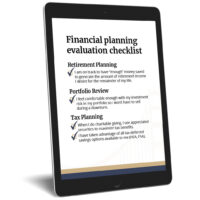
More help for business owners: PPP loans, deductions, and other stimulus provisions
If you’re looking for a new PPP loan for your business, the latest stimulus package, the Consolidated Appropriations Act (CAA) that was signed into law on December 27, 2020 may benefit you. It provides $900B in COVID-19 relief and extends and expands on some provisions of the CARES Act, enacted in March, to help those who continue to be economically harmed by the pandemic. This includes providing another round of funding for the Paycheck Protection Act (which provided for PPP loans to business owners) and clarifying some of the tax implications of the first Act. The law runs 5,593 pages, the longest ever passed by Congress, according to the Senate Historical Office, so there is sure to be much more detail, and confusion, in the coming weeks as it is implemented. Here are some of the key issues the law addresses:
PPP Loans for Business Owners
The new round of PPP loans seems more focused on small businesses who have actually sustained losses, rather than providing general payroll support. The second round is open both to those who received previous PPP loans and those that missed out on the first round, but the qualification requirements are generally more strict this time. To be eligible for a second-draw PPP loan a business must:
- Have fewer than 300 full-time, part-time, or seasonal employees in your business; if you have multiple locations, you may not have more than 300 employees per location. The initial round had a 500-employee limit, and that limit remains for certain industries, including foodservice.
- Be able to show a revenue reduction of at least 25% in the first, second, or third quarter of 2020, as compared to the same quarter in 2019.
- Have exhausted the full amount of the first-draw PPP, if one was taken.
- Have been in operation before February 15, 2020 and is still in business.
Another important change for small business who are continuing to struggle, the CAA provides additional aid both with payroll tax credits and PPP loans. While the CARES Act provided for a refundable payroll tax credit of 50% of certain “qualified wages”, but it was capped at $5,000/employee (50% of up to $10,000 of qualified wages for all calendar quarters) the CAA increases the credit cap to $7,000 (70% of $10,000) for any calendar quarter. This means the maximum amount of credit available in 2021 for each employee increases from $5,000 to $28,000. Now, PPP borrowers can also receive the tax credit, a change from the CARES Act which disallowed the credit for businesses that received a PPP loan.
To make the process easier for smaller PPP borrowers, the Act requires the Small Business Administration (SBA) to create a new forgiveness certification for loans up to $150,000 that is only one page long. The Simplified Forgiveness Application for Loans will allow these smaller borrowers to apply for loan forgiveness more expeditiously since no proof is required to be attached to their forgiveness affidavit.
The CAA also clarifies language in the CARES Act that disallowed tax deductions by providing that businesses are able to deduct expenses funded with PPP loan proceeds, including forgiven loans, and applies retroactively to loans given under the CARES Act. It also includes $20 billion in Economic Injury Disaster Loan Grants available through SBA.
Prepare now to apply for PPP
Final PPP application requirements from the Small Business Administration are expected by mid-January. The SBA has 17 days from December 27th to provide guidance. Visit the SBA.gov coronavirus pages for updates. Like the first time, the loan is likely to be oversubscribed and available only where you have your banking relationship, so it is best to be prepared in advance of the application release.
Other provisions: deductions and payments
The widely discussed return of the 100% deduction for business meals was included, with a stipulation that the meals must be in a restaurant and the change runs only through the end of 2022. Items like extended relief on Minimum Distributions from IRAs for 2021, or further relief on student loan deferral past the current January 31st extension deadline were not included. However, that relief may be on the horizon.
In terms of direct payments, the CAA provided for an additional recovery rebate of $600 for each adult and $600 for each dependent, instead of $1,200 and $500, respectively, in the first round. The phaseout of these stimulus payments begins at $75,000 for single taxpayers and $150,000 for married filing jointly. Unemployment benefits were extended as well, but also at lower levels than the first round. Pandemic Unemployment Assistance of $300/week through March 14, 2021 is available to the self-employed, gig workers and others who either do not typically get unemployment or their state unemployment has run out.
Where to focus now
It’s hard to know whether these measures will be effective in keeping small businesses afloat until the pandemic recedes and some degree of normalcy returns to our economy. We will also have to wait to see what impact this level of government spending will have on our longer-term economic health. For now, you can focus on your personal financial plan and taking the steps you need to stay on track with your goals. If you would like to speak with one of our personal wealth advisors about your specific situation, please reach out to schedule a call.
The information provided herein is for informative and educational purposes only. The use of hyperlinks to third party websites is not an endorsement of the third party. Third party content has not been independently verified. To understand how this content may apply to you, please contact a financial advisor.








